When exploring the realm of music, particularly the key of B on guitar, it’s essential to understand the variety of chords that make up this key. This article dives into what guitar chords are in B, guiding you through each one with clear, step-by-step instructions.
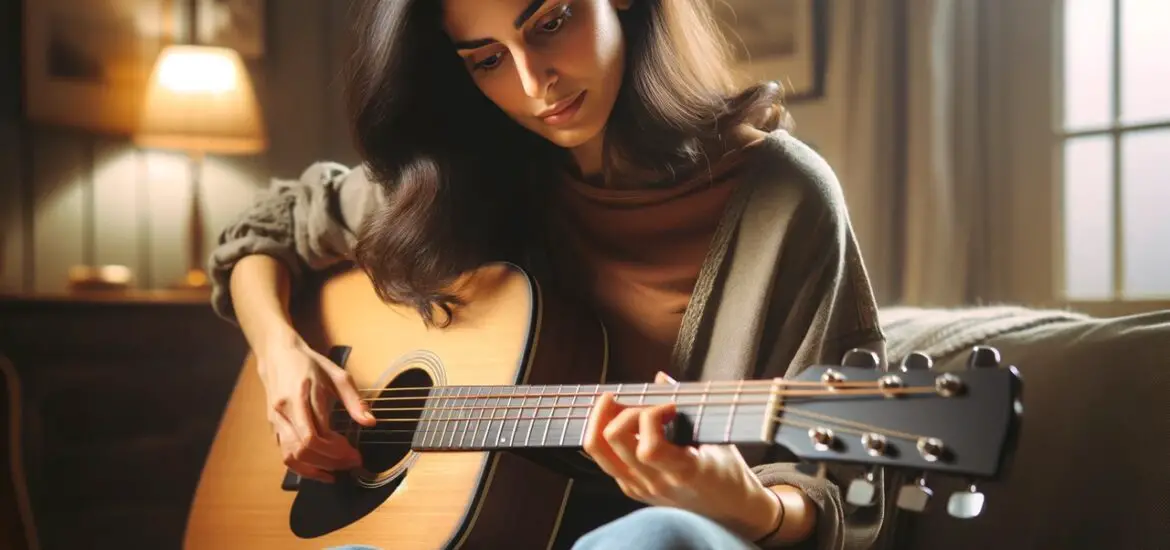
What Guitar Chords Are in B? – An Overview
Understanding the key of B on the guitar is crucial for any guitarist looking to expand their musical knowledge and skills. The key of B is known for its rich and resonant sound, which is shaped by a specific combination of major and minor chords.
In this key, you will encounter a variety of chords that include B major, C# minor, D# minor, E major, F# major, G# minor, and A# diminished. Each of these chords contributes to the distinctive character of the key of B, offering a diverse range of sounds from the bright and bold to the soft and melancholic.
When playing in the key of B, it’s important to familiarize yourself with these chords, as they form the foundation of many songs and compositions in this key. Let’s break down these chords in more detail.
B Major Chord

Barre Placement: Place your index finger across the second fret from the A (5th) string down to the high E (1st) string. This is your barre. Ensure you apply firm and even pressure to allow all notes to ring clearly.
Finger Positions for the Chord:
Ring Finger: Place your middle finger on the fourth fret of the D (4th) string.
Pinky Finger: Place your ring finger right below the index finger, also on the fourth fret, but on the G (3rd) string.
Middle Finger: Place your pinky finger on the third fret of the B (2nd) string.
Strumming the Chord: Strum the strings starting from the A (5th) string down to the high E (1st) string. Avoid strumming the low E (6th) string as it is not part of the chord in this shape.
C# Minor Chord
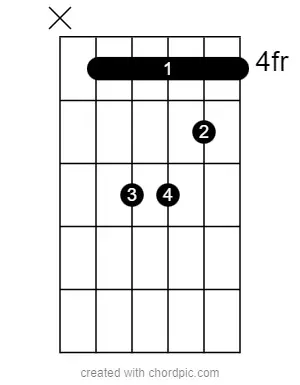
Following the B major is the C# minor chord, which is the second chord in the key of B. The C# minor chord adds a contrasting, melancholic tone to the key. Here’s how to play it:
Barre on the Fourth Fret: Start by placing your index finger across the bottom five strings at the fourth fret. This is similar to the barre you used for the B major chord but further up the fretboard.
Finger Placement for Chord Shape: Place your ring finger on the sixth fret of the D (fourth) string and your pinky finger on the sixth fret of the G (third) string. Then, place your middle finger on the fifth fret of the B (second) string.
Strumming the Chord: Strum the bottom five strings. The C# minor chord should have a mellow, introspective sound. Ensure each string is heard clearly without any muting or buzzing.
D# Minor Chord
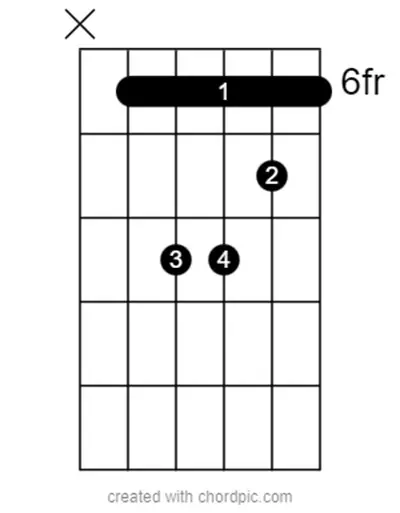
Barre Placement: Start by placing your index finger across the bottom five strings at the sixth fret. This is your barre. Ensure your finger is straight and applies even pressure to get a clear sound from each string.
Finger Positions for the Chord:
Ring Finger: Position your ring finger on the eighth fret of the D (4th) string.
Pinky Finger: Place your pinky finger right next to your ring finger, also on the eighth fret, but on the G (3rd) string.
Middle Finger: Position your middle finger on the seventh fret of the B (2nd) string.
Strumming the Chord: Strum the bottom five strings. Each string should resonate clearly. If any string sounds muted or buzzes, adjust your fingers and the pressure of your barre.
Read more guitar topics here – Common Guitar Questions: Guide to “What” Guitar Questions
E Major Chord
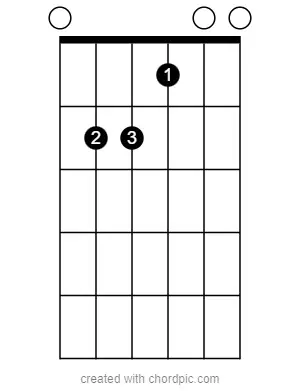
Finger Placement:
Index Finger: Place your index finger on the first fret of the G (3rd) string.
Middle Finger: Position your middle finger on the second fret of the A (5th) string.
Ring Finger: Place your ring finger on the second fret of the D (4th) string.
Strumming the Chord: For the E Major chord, you strum all six strings. This allows the open strings (E, B, and high E) to ring out, contributing to the full sound of the chord.
Ensuring a Clear Sound: Make sure that your fingers do not inadvertently touch adjacent strings, which could mute them. Each string should produce a clear, distinct sound when strummed.
F# Major Chord

Barre Placement: Begin by placing your index finger across all six strings at the second fret. This is your barre. Make sure your finger is straight, providing consistent pressure across all the strings to ensure each one rings clearly.
Finger Positions for the Chord: The shape of your other fingers will mimic that of the E Major chord, but two frets higher.
Middle Finger: Position it on the third fret of the G (3rd) string.
Ring Finger: Place it on the fourth fret of the A (5th) string.
Pinky Finger: Position your pinky right beside your ring finger, on the fourth fret of the D (4th) string.
Strumming the Chord: Strum all six strings. Ensure each string sounds clear. If there are muted sounds or buzzes, check your barre pressure and finger placements, adjusting as needed.
G# Minor Chord

Barre Placement: For the G# minor chord, place your index finger across all six strings at the fourth fret. This is your barre.
Finger Positions for the Chord: The shape of this chord is similar to the E minor chord, but your fingers will be two frets higher.
Ring Finger: Place it on the sixth fret of the A (5th) string.
Pinky Finger: Position it on the sixth fret of the D (4th) string.
Strumming the Chord: Strum all six strings. Each string should resonate clearly. If any strings are muted or produce a buzzing sound, adjust your fingers and barre pressure.
A# Diminished Chord
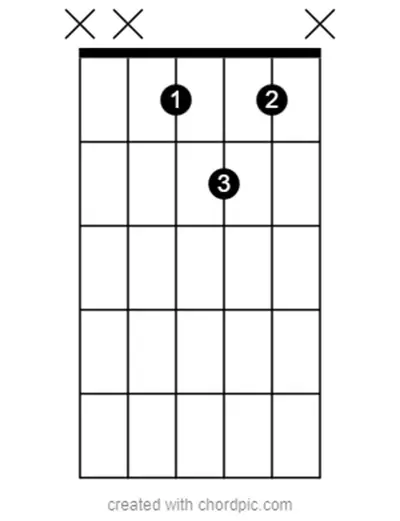
Index Finger: Place it on the second fret of the D (4th) string (Note: E).
Ring Finger: Position your ring finger on the third fret of the G (3rd) string (Note: A#).
Middle Finger: Put your middle finger on the second fret of the B (2nd) string (Note: C#).
When playing this chord: Strum only the D, G, and B strings. The other strings (E, A, and high E) are not played in this chord shape.
Strumming the Chord: Strum the A, D, and G strings together. Avoid strumming the high E, B, and low E strings.
Conclusion: What Guitar Chords Are in B?
Mastering what guitar chords are in B involves understanding and practicing each of these chords. Remember, consistent practice is key to becoming proficient in the key of B.